#Walmer Castle
Text

x
25 notes
·
View notes
Text
Südengland 2023 - Tag 26
Ladies and Gentlemen!
Nachdem man uns relativ kurzfristig die Unterkunft in Dover aufgekündigt hatte, angeblich wegen “unforeseen circumstances”, konnten wir uns - nach einigem hin & her - bei booking com eine neue Unterkunft aus deren Portfolio aussuchen.

Da die ursprüngliche Unterkunft, wie schon von uns vermutet, die Ferienwohnung überbucht hatte, bekommen sie jetzt von booking com die Mehrkosten aufs Auge gedrückt. Dazu wurden die Vermieter auf dieser Buchungsplattform gesperrt, da das nicht das erste Mal war.

Jedenfalls sitzen wir jetzt 20 Minuten von Dover entfernt, im beschaulichen Küstenstädtchen Deal - ein kleines, aber verstecktes Juwel.

Zum Abschluß unserer Reise widmen wir uns einem der größten Skandale, der vor rund 100 Jahren das südliche England buchstäblich in Atem hielt. Worum ging es dabei? Natürlich um Liebe, Leidenschaft, Ehebruch and everything in between. How shocking!

Schauplatz des ganzen Liebeswirrwarrs war das prachtvolle Walmer Castle, das nur gerade einmal 1.500 Meter von unserer Unterkunft entfernt liegt. Da können wir das Auto prima stehen lassen und machen uns zu Fuß auf den Weg.

Ursprünglich war das Walmer Castle, das knapp 12 km östlich von Dover liegt, eine Tudor-Festung. Im Jahr 1540 zur Zeit der Herrschaft von Heinrich VIII erbaut, diente die Festung zum Schutz vor Angriffen der Spanier und Franzosen.

Ganz typisch dafür sind die runden Außenmauern, geformt wie eine Blüte in mehreren Kreisen. Deshalb spricht man auch hier von der Tudor-Rose.

Sinn und Zweck war, dass der Kanonenbeschuss feindlicher Schiffe nicht so viel Schaden anrichten konnte, weil durch die Abrundung nur ein kleiner Teil des Mauerwerks zerstört wurde.

Von hier aus hat man einen strategisch guten Überblick über die See, da die Anlage direkt am Strand liegt. Seit 1708 ist Walmer Castle der Sitz des Lord Warden of the Cinque Ports.

Dies sind die Inhaber des ältesten militärischen Amtes in England. Sie repräsentiert den britischen Monarchen in den Cinque Ports, einem Bund von ursprünglich fünf, heute 14 Hafenstädten in Kent und Sussex. In früheren Zeiten ein wichtiger Posten, ist er längst ein (einträglicher) Ehrenposten für verdiente britische Persönlichkeiten.

Erwähnenswert finde ich folgende Amtsinhaber:
Arthur Wellesley, 1. Duke of Wellington, der 1852 im Walmer Castle verstarb. Der Sessel, in dem er verstarb, ist noch vorhanden und zu besichtigen.
Auch ein Paar Stiefel des Dukes sind zu sehen. Deren englische Bezeichnung „Wellington Boots“ (kurz Wellies) für Gummistiefel geht auf diesen zurück.

Sir Winston Churchill, wichtig(st)er britischer Staatsmann des 20. Jahrhunderts, hatte das Amt von 1941 bis zu seinem Tod 1965 inne.
Elisabeth, die Königinmutter (als „Queen Mum“ bekannt, der offizielle Titel lautet „Queen Elisabeth The Queen Mother“; sie war schließlich selbst einmal englische Königin). Sie hatte das Amt von 1978 bis zu ihrem Tod 2002 für 23 Jahre inne.

Und der schöne William Lygon, 7. Earl Beauchamp. Seit der Serie Outlander wissen wir, dass man Beauchamp nicht französisch ausspricht, sondern durch Anglisierung: Bietsch-häm.
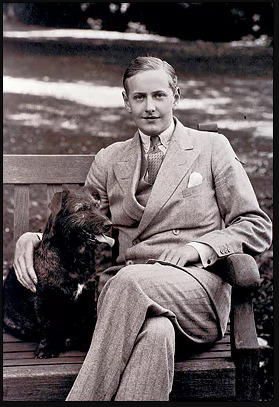
William Lygon wurde 1872 geboren und war schon in jungen Jahren eine bekannte Persönlichkeit des öffentlichen Lebens. Er trat 1891 die Nachfolge seines Vaters als Earl Beauchamp an. Als hochrangige Persönlichkeit der Liberalen Partei stieg er bis zum Senior auf und 1910 wurde er Kabinettsminister.
1902 heiratete er Lettice Grosvenor, die Schwester von Hugh Grosvenor, 2. Duke of Westminster. Sie hatten insgesamt 7 Kinder, drei Söhne und vier Töchter. Familienfotos zeigen Beauchamp, Lettice und ihre sieben Kinder, wie sie ihre Umgebung und die Gesellschaft des anderen im Walmer genießen.
Anscheinend hatte der Duke of Westminster seinen Schwager William nie gemocht, da er eifersüchtig auf das öffentliche Amt seines Schwagers und sein offensichtliches häusliches Glück war.

Hugh Grosvenor war ein wütender, unerfüllter Mann - trotz dreier Ehen (und er würde noch ein viertes Mal heiraten).
1931 war Grosvenor unglücklich mit seiner dritten Frau, Loelia Ponsonby, verheiratet. Sie behauptete, er habe sich jede Nacht betrunken und sei untreu gewesen. Doch während er jegliche sexuelle Freiheit genoss, erwartete er von seinen Mitmenschen, insbesondere von seiner Familie, höchste Maßstäbe an Anstand.
Im Jahr 1931 wurde Earl Beauchamp als Homosexueller „geoutet“. Williams Entlarvung hatte lange auf sich warten lassen. Seit Mitte der zwanziger Jahre kursierten Geschichten über homosexuelle Partys, auf denen einheimische Jugendliche und Fischer den Grafen und seine Gäste bedienten.

Doch sein Verhängnis begann in Australien. Im August 1930 war William zu einer Weltreise aufgebrochen. Er wurde in Sydney „überwältigend“ empfangen und blieb zwei Monate, begleitet von einem Diener aus Madresfield und einem jungen liberalen Abgeordneten, Robert Bernays, der als Redenschreiber fungierte.
Der Earl und sein Kammerdiener teilten die Wohnung nicht als Herr und Diener, sondern als Liebespaar, eine häusliche Vereinbarung, die nicht unbemerkt blieb.
Der Duke of Westminster beauftragte Detektive, weitere Beweise gegen seinen Schwager zu sammeln. Er hoffte, die Liberale Partei durch Beauchamp zu ruinieren, sowie auch Beauchamp persönlich aufgrund seiner privaten Abneigung. Homosexualität war damals eine Straftat.
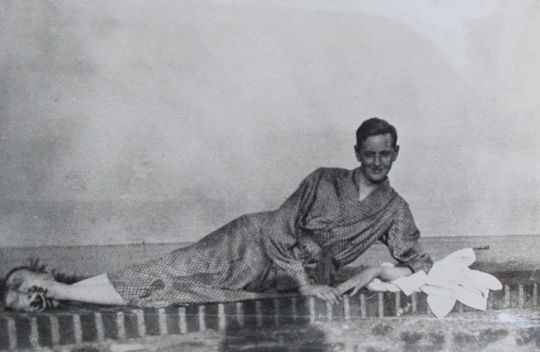
Im Frühjahr 1931 lud der Duke seine Schwester vor und legte ihr im Beisein von drei Anwälten die Beweise vor. Er empfahl Ihr, William sofort mit ihren Kindern im Alter zwischen 14 und fast 28 Jahren zu verlassen und ein Scheidungsverfahren einzuleiten.
Anschließend informierte Westminster den König, dass er Beweise für kriminelle Handlungen der Unanständigkeit zwischen William und einer Reihe von Männern vorlegen könne. William war jedoch ein Freund des Königs.
Seine Majestät hatte keinen Zweifel daran, dass Westminster William entlarven, die Beweise der Presse vorlegen und ihn verhaften lassen würde.
Der Gedanke an einen solchen Prozess, bei dem männliche Prostituierte vorgeladen, Billets-doux verlesen und Schwachstellen bloßgestellt würden, ließen den König eingreifen.
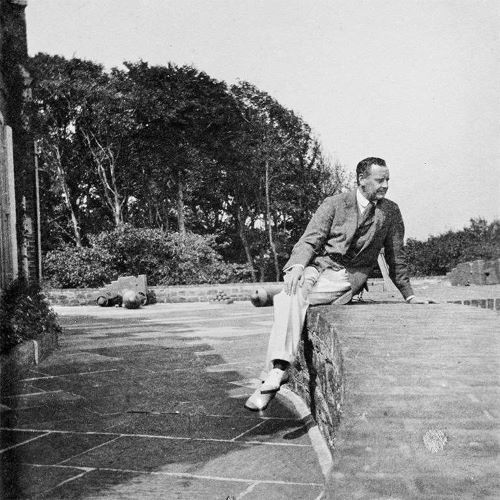
Um die Krise einzudämmen, wurden eigens drei Ritter des Hosenbandordens geschickt, um William davon zu überzeugen, alle seine offiziellen Ämter niederzulegen und England bis Mitternacht zu verlassen.
In einem letzten Tiefschlag schrieb der Duke of Westminster an William einen knappen Brief: „Lieber Schwager, du hast bekommen, was du verdient hast. Deins, Westminster.“
Wenige Tage nach seiner Abreise erfuhren Zeitgenossen, dass der „Exzentriker“ Beauchamp ins Ausland gegangen sei, „um Schlammbäder zu nehmen“, ein Euphemismus für einen homosexuellen Exilanten.
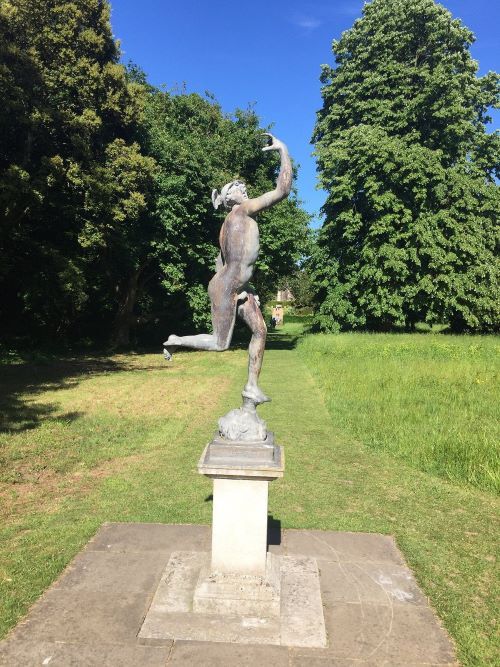
Besonders sehenswert war für uns der 1997 eröffnete „Queen Mother’s Garden“, der für Queen Mum - Elizabeth Bowes-Lyon (1900 – 2002) - zu ihrem 95. Geburtstag geschaffen wurde und wo ihre Lieblingsblumen gepflanzt wurden.

Sie soll sich hier sehr gern aufgehalten haben. An sie erinnert hier auch eine Bronze-Statue: Auf einer Parkbank sitzt einer ihrer Lieblingshunde, ein Welsh Corgi Pembroke.

Die Festung schützt den wunderschönen Garten vor den heftigen Kanalwinden, so wächst und gedeiht hier eine beeindruckende Vielfalt an Pflanzen und Bäumen. Selbst im ausgetrockneten Festungsgraben wachsen Magnolien.

Insgesamt gehören acht Hektar mit Gartenanlagen und Wald zum Castle. Diese Fläche wurde seit dem 16. Jhd. immer wieder umgestaltet, jeweils nach dem Geschmack des ansässigen Lord Wardens.

Heutzutage kümmert sich English Heritage um die Anlage. Selbstverständlich führte der Ein- und Ausgang durch den Empfang mit einem Souvenir Shop. Und ebenso selbstverständlich ist ein Tea Room vorhanden.

Da das Walmer Castle direkt am Strand liegt, kann man von hier aus übrigens fabelhaft am Meer entlang laufen.

Für uns endet hier unsere Reise und es geht wieder per Fähre zurück nach Dünkirchen und weiter nach Deutschland.

Dieses Mal jedoch ohne weitere Zwischenübernachtung, sondern auf direktem Wege.
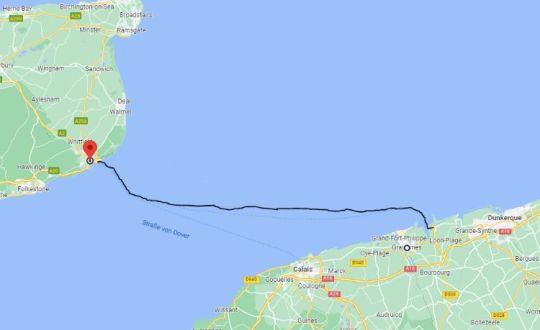
Ich danke all meinen Lesern, die bis hierhin tapfer durchgehalten haben, für die Aufmerksamkeit.

Wir lesen uns wieder im Dezember, wenn Ihr möchtet, wenn es für uns wieder einmal nach Namibia geht.
Good Night!
Angie, Micha und Mr. Bunnybear (Hasenbär)
10 notes
·
View notes
Text

Walmer Castle, Walmer, Kent, England, September 2023.
#photography#nature photography#trees#castle#sky#kent#england#walmer#walmer castle#lensblr#photographers on tumblr#original photography
4 notes
·
View notes
Text
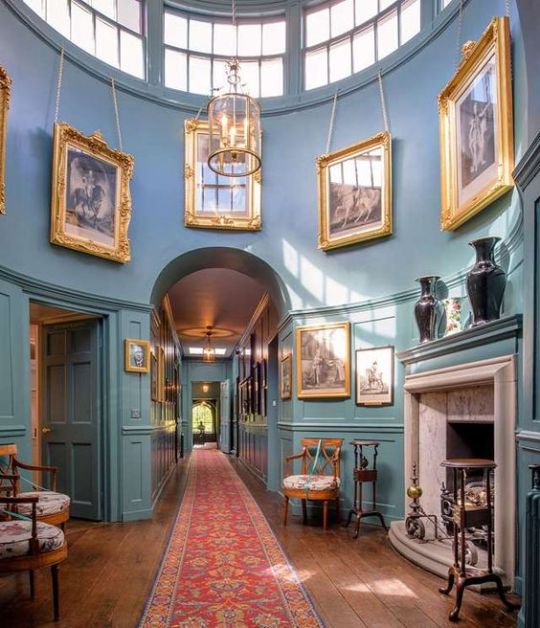
Walmer Castle, Deal. Residence of The Lord Warden of the Cinque Ports.
46 notes
·
View notes
Text
THIS DAY IN GAY HISTORY
based on: The White Crane Institute's 'Gay Wisdom', Gay Birthdays, Gay For Today, Famous GLBT, glbt-Gay Encylopedia, Today in Gay History, Wikipedia, and more … February 20




1775 – In Frisia, the Netherlands, two teenage servants are banished for three years for "toleration of sodomy."

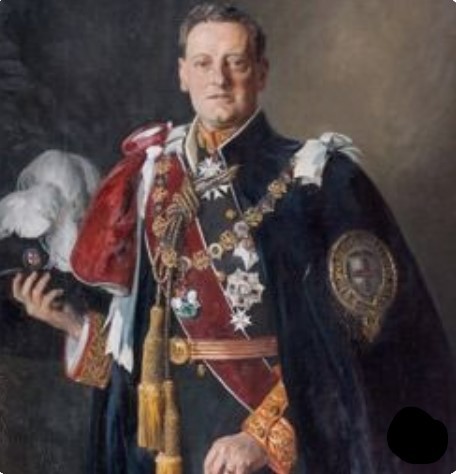
1872 – William Lygon, Seventh Earl Beauchamp, (d.1938), was a British Liberal politician. He was Governor of New South Wales between 1899 and 1901, a member of the Liberal administrations of Sir Henry Campbell-Bannerman and H. H. Asquith between 1905 and 1915 and leader of the Liberal Party in the House of Lords between 1924 and 1931. When political enemies threatened to make public his homosexuality he resigned from office to go into exile. Lord Beauchamp is generally supposed to have been the model for Lord Marchmain in Evelyn Waugh's novel, Brideshead Revisited.
In 1931, Lord Beauchamp was "outed" as homosexual. Although Beauchamp's homosexuality was an open secret in parts of high society, and one that his political opponents had refrained from using against him despite its illegality, Lady Beauchamp was oblivious to it, and professed a confusion as to what homosexuality was when her husband's was revealed. He had numerous affairs at his homes at Madresfield and Walmer Castle, with his partners ranging from servants to socialites, and including local men.
To those in the know Beachamp was notorious for his weakness for footmen, and his children would warn their male friends to lock their doors at night if they stayed at Madresfield, the family estate. His second son, Hugh Lygon, was a close friend, probably a lover, of Evelyn Waugh, and is generally accepted to be one of the main inspirations for Sebastian Flyte in Waugh's novel Brideshead Revisited.
In 1930, while on a trip to Australia, it became common knowledge in London society that one of the men escorting him, Robert Bernays, a member of the Liberal Party, was a lover of his. It was reported to King George and Queen Mary by his Tory brother-in-law, the Duke of Westminster, who hoped to ruin the Liberal Party through Beauchamp, as well as Beauchamp personally due a private dislike he had taken. Homosexuality was a criminal offence at the time, and the King was horrified, rumoured to have said that "I thought men like that shot themselves". The King had a personal interest in the case, as his sons Henry and George (who was bisexual) had visited Madresfield in the past. George was then in a relationship with Beauchamp's daughter Mary, and this was cut off by her father's outing.
After sufficient evidence had been gathered by the Duke, Beauchamp was made an offer to separate from his wife Lettice (without a divorce), retire on a pretence, and then leave the country. Beauchamp refused and, shortly afterwards, the Countess Beauchamp obtained a divorce. There was no public scandal, but Lord Beauchamp resigned all his offices except that of Lord Warden of the Cinque Ports and went into exile on the continent (fearing his arrest if he did not), briefly threatening suicide before going.
Lord Beauchamp died of cancer in New York City, aged 66. He was succeeded in the earldom by his eldest son, William.

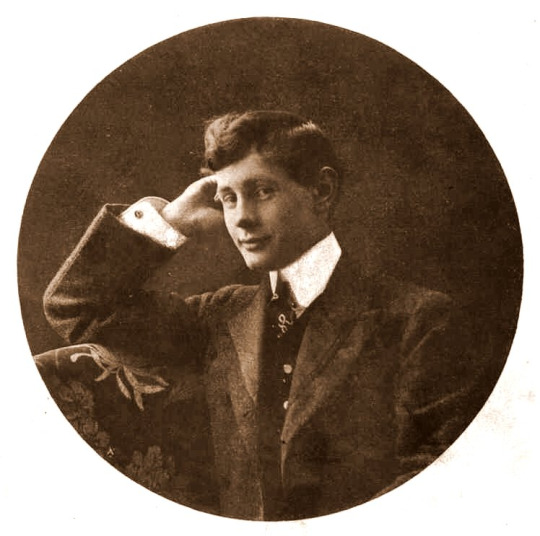
1880 – On this date the Swedish aristocrat Count D'Adelswärd-Fersen was born (d.1923). Baron Fersen, a Swedish Count, living in Paris, was a novelist and poet .
D'Adelswärd-Fersen's grandfather had founded a steel empire, which was profitable enough that it made d'Adelswärd-Fersen exceedingly wealthy when he inherited at age 22. Consequently, he was much sought-after in the higher circles, as families hoped to marry him to one of their daughters.
Apart from joining the military, the young d'Adelswärd-Fersen travelled extensively and published some poems. At around this time, his homosexual leanings became apparent to him, which are also relatively clearly addressed in his poetry. Unfortunately for him, he was not sexually interested in adult men (which at the time in France would not have brought him into legal trouble) but in teenage boys between about 15 and 17 years old. This inclination eventually caused his undoing in French society.
In 1903, accusations surfaced that the Baron had held Black Masses in his house at 18 Avenue de Friedland. Supposedly these orgiastic feasts were attended by local Parisian schoolboys and involved sexual misconduct between the Baron and the boys. He was charged with indecent behavior with minors and served a six-month prison sentence, was fined 50 francs and lost his civil rights for five years.The scandal involving the schoolboys made him a persona non grata in the salons and dashed his marriage plans. He took up residence in Capri, where he lived with his longtime boyfriend, Nino Cesarini, until his death in 1923.
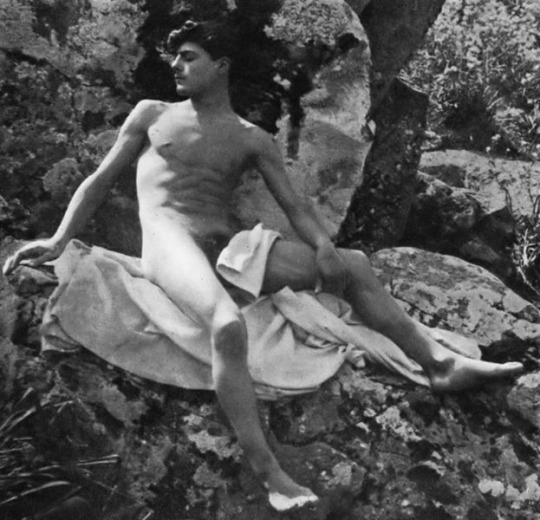
The Count in all his glory
Lord Lyllian, published in 1905, is one of d'Adelswärd-Fersen's novels and perhaps his most important work, satirizing the scandal around himself in Paris, with touches of the Oscar Wilde affair thrown in for good measure.
The hero, Lord Lyllian, departs on a wild odyssey of sexual debauchery, is seduced by a character that seems awfully similar to Oscar Wilde, falls in love with girls and boys, and is finally killed by a boy. The public outcry about the supposed Black Masses is also caricatured. The work is an audacious mix of fact and fiction, including four characters that are alter egos of d'Adelswärd-Fersen himself.
Akademos: Revue Mensuelle d'Art Libre et de Critique (1909) was d'Adelswärd-Fersen's short-lived attempt at publishing a monthly literary journal. It was magazine of a very luxurious kind, each issue printed on several sorts of deluxe paper, with contributions by many famous authors, like Colette, Henry Gauthier-Villars, Laurent Tailhade, Josephin Peladan, Marcel Boulestin, Maxim Gorky, Georges Eekhoud, Achille Essebac, Claude Farrère, Anatole France, Filippo Tommaso Marinetti, Henri Barbusse, Jean Moréas and Arthur Symons.
In each issue, very carefully, as is clear from Fersen's letters to Georges Eekhoud, a homosexual element was introduced: a poem, an article, or a hint in the magazine's serial Les Fréquentations de Maurice by Boulestin. As a magazine with a homosexual agenda, it was the first publication of its kind in the French language. However, only an estimated 10% of Akademos may be counted as homosexual. Thematically, as for the gay part, it trod somewhat similar ground as the German journal Der Eigene, published between 1896 and 1931 by Adolf Brand. This is not a coincidence, as d'Adelswärd-Fersen studied the German publications that tried to push for the social acceptance of homosexuality before launching Akademos. Also, he corresponded with both Brand and Magnus Hirschfeld. Unfortunately, it was published for only one year.
D'Adelswärd-Fersen frequently organised parties in his splendid villa, to which all the intellectuals and 'eccentric' travellers staying on the island of Capri were invited. The Baron lived for twenty years on the island; his death there, possibly through suicide, is thought to have been caused by an overdose of cocaine. His ashes are kept in Capri's non-catholic cemetery.


Cooper with his "son" Billy McCarty
1911 – Art historian, critic and collector, principally of Cubism, (Arthur William) Douglas Cooper (d.1984) – who also published as Douglas Lord was born to a wealthy family who had made their fortune in Australia generations before.
In 1933, he became a partner in the Mayor Gallery in London and planned to show works of Picasso, Léger, Miró and Klee in collaboration with Paris-based art dealers like Daniel-Henry Kahnweiler and Pierre Loeb; however, this collaboration ended fast and unfavourably. Cooper was paid out in works of art.
At the outbreak of the Second World War 1939, he acquired 137 cubist works, partly with the help of collector and dealer Dr. Gottlieb Friedrich Reber, some of them masterpieces, using a third of his inheritance.
Cooper chose to join a medical unit in Paris when World War II started. His account of the transfer of wounded soldiers to Bordeaux to be shipped to Plymouth achieved some fame when published in 1941 by him and his co-driver C. Denis Freeman (The Road to Bordeaux). For this action, he received a French Médaille militaire.
Back in Liverpool Cooper was arrested as a spy because of his French uniform, missing papers and improper behaviour, a treatment for which he never forgave his fellow countrymen. Subsequently, he joined the Royal Air Force Intelligence unit and was sent to Cairo as an interrogator, a job at which he was enormously successful in squeezing out secrets from even hard-boiled prisoners, not least due to his "'evil queen' ferocity, penetrating intelligence, and refusal to take no for an answer, as well as his ability to storm, rant, and browbeat in Hochdeutsch, dialect, or argot, [which] were just the qualifications that his new job required.".
He was assigned to a unit trying to investigate into Nazi looted art. He was very successful, his most eminent discovery being the Schenker Papers which made it possible to prove that Paris dealers, Swiss collectors, German experts and museums, in particular the Museum Folkwang in Essen were deeply engaged in looting Jewish property and art as well as building collections for Hitler and Hermann Göring.
By 1948, Cooper, a homosexual, had established an abode in London living with Basil Mackenzie, Lord Amulree (1900-1983), a noted physician (Lord). While with Amulree, he met John Richardson, an art historian, and the two paired to become life partners for fifteen years.
Cooper and Richardson moved to southern France, where in 1950 Cooper bought the Château de Castille near Avignon, a suitable place to show his impressive art collection, which he continued to expand with newer artists like Klee and Miró. During the following years, art historians, collectors, dealers and artists flocked to his home which had become something like an epicenter of Cubism, very much to his pride.
Léger and Picasso were regular guests; the latter even became a substantial part of its life. He regarded Picasso as the only genius of the 20th century and he became a substantial promoter of the artist.
At that time Richardson developed an interest in Picasso's portraits and contemplated creating a publication; more than 20 years later, these plans expanded into Richardson's four-part Picasso biography A Life of Picasso. In 1960, Richardson left Cooper and moved to New York City.
In 1961, Cooper was found on a road outside Nîmes, heavily injured by stab wounds in the stomach; on his way to the post office in Nîmes to send an article about Picasso's birthday to a London newspaper, he had stopped at a notorious quarter and picked up a young Algerian Fellagha (resistance fighter against the French occupation forces) who had been interned in an open camp nearby. They drove to a lonely area, where the boy drew a knife and demanded Cooper's money or his life.
Like most people in France in those days, Cooper carried two purses, one with change and one with large bills. He handed over the first, infuriating the robber, who demanded more money and stabbed him several times. Cooper pushed back his intestines and dragged himself towards the city, his training as a medic proving very useful; against all odds, his cries for help in that lonely area were finally heard, so he could be saved, although he had lost much blood and his intestines were heavily damaged. The culprit was arrested and claimed to have been resisting a sexual assault.
In 1972, he adopted his male companion, the 35-year-old William "Billy" McCarty as his son.
In 1974, about 20 small paintings by Picasso, Braque and Gris were stolen from his house; and then Cooper foolishly dismissed his old housekeeper and in consequence lost all respect from the neighbours. Afterwards, he relocated to Monte Carlo, mainly for safety reasons, where he led a rather secluded life. Both incidents were reported by major English and French newspapers.
Cooper died in London in 1984. He left his art collection to his adopted "son" Billy McCarty Cooper (having adopted him according to French law, in order that nobody else would inherit anything, in particular not his family).


1927 – Roy Cohn, American lawyer and self-loathing homosexual, born on this date (d.1986), became famous during Senator Joseph McCarthy's investigations into Communist activity in the United States during the Second Red Scare. Cohn gained special prominence during the Army-McCarthy Hearings. He was also an important member of the U.S. Department of Justice's prosecution team at the espionage trials of Soviet spies Julius and Ethel Rosenberg.
The Rosenberg trial brought the 24-year-old Cohn to the attention of Federal Bureau of Investigation (FBI) director J. Edgar Hoover, who recommended him to Joseph McCarthy. McCarthy hired Cohn as his chief counsel, choosing him over Robert Kennedy, reportedly in part to avoid accusations of an anti-Semitic motivation for the investigations.
Roy Cohn spent several decades living a discreet life as a closeted gay man, but when he brought on G. David Schine as chief consultant to Macarthy's staff, speculation arose that Schine and Cohn had a sexual relationship, although some historians have more recently concluded the friendship was platonic. Tall, rich, and suave, the Harvard-educated (and heterosexual) Schine contrasted starkly with the short, physically undistinguished, and caustic Cohn. During the Army-McCarthy hearings, Cohn denied having any "special interest" in Schine or being bound to him "closer than to the ordinary friend." Joseph Welch, the Army's attorney in the hearings, made an apparent reference to Cohn's homosexuality. During the inquiry into Communism and homosexuality in the military, Cohn used a doctored photo of Schine and an Army general to demonstrate the Army's approval of Cohn's bullying attempts to get Schine permanently assigned to McCarthy's committee. Welch insinuated McCarthy's homosexuality by suggesting that a "pixie"—"a close relative of a fairy"—was responsible for altering the photo, implying Cohn himself. Fairy was, and is, a derogatory term for a gay man, The people at the hearing recognized the allusion and found it amusing; Cohn later called the remark "malicious," "wicked," and "indecent."
In 1971, businessman Donald Trump moved to Manhattan, where he became involved in large construction projects. Trump came to public attention in 1973 when the Justice Department accused him of violating the Fair Housing Act in his operation of 39 buildings. The government alleged that Trump's corporation quoted different rental terms and conditions to blacks and made false "no vacancy" statements to blacks for apartments they managed in Brooklyn, Queens, and Staten Island.
Representing Trump, Cohn filed a countersuit against the government for $100 million, asserting that the charges were irresponsible and baseless. The countersuit was unsuccessful.
Trump settled the charges out of court in 1975 without admitting guilt, saying he was satisfied that the agreement did not "compel the Trump organization to accept persons on welfare as tenants unless as qualified as any other tenant.” The corporation was required to send a bi-weekly list of vacancies to the New York Urban League, a civil rights group, and give them priority for certain locations. Several years later (in 1978) the Trump Organization was again in court for violating terms of the 1975 settlement; Cohn called the new charges "nothing more than a rehash of complaints by a couple of planted malcontents." Trump denied the charges.

Two of a kind: Trump and Cohn
During his checkered legal career, he was several times reprimanded for unethical conduct and sued by disgruntled clients. On three occasions he was tried on various charges, including fraud, but was acquitted. He was ultimately disbarred for financial and ethical improprieties.
Cohn never acknowledged his homosexuality, even as he openly frequented gay bars in the 1970s. In 1984, Cohn was diagnosed with AIDS and attempted to keep his condition secret while receiving experimental drug treatment. He participated in clinical trials of AZT, a drug initially synthesized to treat cancer, but later developed as the first anti-HIV agent for AIDS patients. He insisted to his dying day that his disease was liver cancer.
Although he had led an extravagantly gay lifestyle during the 1970s, replete with an entourage of handsome "assistants," he continued to deny his homosexuality even as he lay dying of AIDS.
He died on August 2, 1986 in Bethesda, Maryland, of complications from AIDS at the age of 59. According to Republican political consultant Roger Stone, for whom Cohn was a role model, Cohn's "absolute goal was to die completely broke and owing millions to the IRS. He succeeded in that." He is buried in Union Field Cemetery in Queens, New York.
A dramatic, controversial man in life, Cohn inspired many dramatic fictional portrayals after his death. Probably the most famous is his role in Tony Kushner's Angels In America: A Gay Fantasia on National Themes, in which Cohn is portrayed as a power-hungry hypocrite who is haunted by the ghost of Ethel Rosenberg as he lies dying of AIDS. In the initial Brodway production, the role was created by Ron Liebman; in the 2003 HBO version of Kushner's play, Cohn was played by Al Pacino. Cohn is also a character in Kushner's one-act play, G. David Schine in Hell.

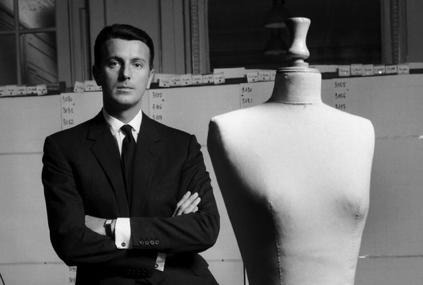
1927 – Count Hubert de Givenchy (d. 2018) was a French fashion designer who founded the house of Givenchy in 1952. He was famous for having designed much of the personal and professional wardrobe of Audrey Hepburn and clothing for Jacqueline Bouvier Kennedy. He was named to the International Best Dressed List Hall of Fame in 1970. His life partner was Philippe Venet.
Hubert James Taffin de Givenchy was born in Beauvais, Oise into a Protestant family. He was the younger son of Lucien Taffin de Givenchy, Marquis of Givenchy, and his wife, the former Béatrice ("Sissi") Badin. The Taffin de Givenchy family, which traces its roots to Venice, Italy (the original surname was Taffini), was ennobled in 1713, at which time the head of the family became Marquis of Givenchy. He had an elder brother, Jean-Claude de Givenchy, who inherited the family's marquessate and eventually became the president of Parfums Givenchy.
After his father's death from influenza in 1930, he was raised by his mother and maternal grandmother, Marguerite Dieterle Badin, the widow of Jules Badin, an artist who was the owner and director of the historic Gobelins Manufactory and Beauvais tapestry factories. Artistic professions ran in the extended Badin family. Givenchy's maternal great-grandfather, Jules Dieterle, was a set designer who also created designs for the Beauvais factory, including a set of 13 designs for the Elysée Palace. One of his great-great-grandfathers also designed sets for the Paris Opera.
He moved to Paris at the age of 17, and he studied at the École des Beaux-Arts.
Givenchy's first designs were done for Jacques Fath in 1945. Later he did designs for Robert Piguet and Lucien Lelong – working alongside the still-unknown Pierre Balmain and Christian Dior. From 1947 to 1951 he worked for the avantgarde designer Elsa Schiaparelli.
In 1952, he opened his own design house at the Plaine Monceau in Paris. Later, he named his first collection "Bettina Graziani" for Paris's top model at the time. His style was marked by innovation, contrary to the more conservative designs by Dior. At 25, he was the youngest designer of the progressive Paris fashion scene. His first collections were characterized by the use of rather cheap fabrics for financial reasons, but they always piqued curiosity through their design.
Audrey Hepburn, later the most prominent proponent of Givenchy's fashion, and Givenchy first met in 1953 during the shoot of Sabrina. He went on to design the black dress she wore in Breakfast at Tiffany's. He also developed his first perfume collection for her (L'Interdit and Le de Givenchy). Audrey Hepburn was the face of that fragrance. This was the first time a star was the face of a fragrance's advertising campaign, and probably the last time that it was done for free, only by friendship.
Givenchy retired from fashion design in 1995. His longtime partner was fashion designer Philippe Venet. Hubert de Givenchy died in his sleep at the Renaissance chateau near Paris on Saturday 10 March 2018. He was 91 and was buried in Passy Cemetery in Paris.

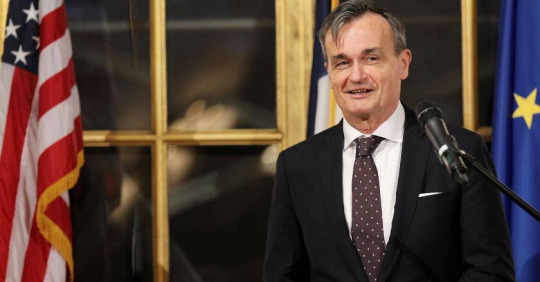
1953 – Gérard Araud is a French diplomat, who since 2014 has served as Ambassador of France to the United States. He has also served as France's Permanent Representative to the United Nations as well as Director General for Political and Security Affairs of the French Ministry of Foreign Affairs and International Development.
Gérard Araud was born in Marseille. He holds engineering degrees from the École polytechnique and the École nationale de la statistique et de l'administration économique. Araud graduated from the Institut d'études politiques de Paris and is also an alumnus of the École nationale d'administration (class of 1982).
Araud joined the French delegation to the North Atlantic Council (NATO) in Brussels in 1995 as Deputy Permanent Representative. He became Director for Strategic Affairs, Security and Disarmament at the Ministry of Foreign Affairs in 2000. He was Ambassador of France to Israel from 2003 to 2006.
In September 2006, Araud was appointed Director General for Political Affairs and Security, Deputy Secretary General of the Ministry of Foreign Affairs. On July 15, 2009, he was appointed Permanent Representative of France to the Security Council and Head of the Permanent Mission of France to the United Nations. He presented his credentials to Ban Ki-moon, United Nations Secretary-General, on 10 September 10, 2009. He served as the President of the Security Council in February 2010, May 2011, August 2012, and December 2013.
On July 23, 2014 Araud was appointed Ambassador of France to the United States by presidential decree.
On the night of the election of Donald Trump as President, Araud tweeted:
"It is the end of an era, the era of neoliberalism. We don't yet know what will succeed it," followed by: "After Brexit and this election anything is possible. A world is collapsing before our eyes. Vertigo."
Right-wing French political activists, reading this as an undiplomatic expression of dismay at the result, called for Araud's dismissal. On Pearl Harbor Day in 2017, Araud lodged a political insult against the United States by issuing a tweet that said, "In this Pearl Harbor day, we should remember that the US refused to side with France and the UK to confront the fascist powers in the 30s." After the tweet was met with criticism, Araud deleted it and attempted to clarify his remarks.Araud is openly gay and supports same-sex marriage. His long-time partner is photographer Pascal Blondeau.


1953 – Gaëtan Dugas (d.1984) was a Canadian and early AIDS patient who worked for Air Canada as a flight attendant. In March 1984, a Centers for Disease Control and Prevention (CDC) study tracking the sexual liaisons and practices of gay and bisexual men in California, New York, and some other states found Dugas to be the center of a network of sexual partners, which led to his being dubbed "patient zero", although suspicions that he initially brought HIV to North America were disproven. He is used as an example in epidemiology of an index case.
Dugas traveled the world and had myriad sexual liaisons with other men. At the time, gay culture was largely illegal, underground, and clandestine. Gay bars and gay bath houses were social settings for gay and closeted men to meet. The extent to which HIV/AIDS was known about in the early 1980s, how it was spread, or when Dugas was diagnosed are disputed.
Dugas is featured prominently in Randy Shilts's book And the Band Played On: Politics, People, and the AIDS Epidemic (1987), which documents the outbreak of the AIDS pandemic in the United States, and was portrayed by Jeffrey Nordling in the 1993 HBO film adaptation. Shilts portrays Dugas as having almost sociopathic behavior by allegedly intentionally infecting, or at least recklessly endangering, others with the virus. Dugas is described as being a charming, handsome sexual athlete who, according to his own estimation, averaged hundreds of sex partners a year. He claimed to have had over 2,500 sexual partners across North America since becoming sexually active in 1972.
Genetic analysis of HIV provides some support for the Patient Zero theory. Dugas is now believed to be part of a cluster of homosexual men who traveled frequently, were extremely sexually active, and died of AIDS at a very early stage in the epidemic.
Dugas died in Quebec City on March 30, 1984, as a result of kidney failure caused by AIDS-related infections.


1967 – Kurt Cobain (d.1994) was an American singer-songwriter and musician, best known as the guitarist, primary songwriter and frontman of the rock band Nirvana. Through his angst-fueled songwriting and anti-establishment persona, Cobain's compositions widened the thematic conventions of mainstream rock music. He was often heralded as a spokesman of Generation X and is considered to be one of the most influential musicians in the history of alternative rock.
Born in Aberdeen, Washington, Cobain formed the band Nirvana with Krist Novoselic and Aaron Burckhard in 1987 and established it as part of the Seattle music scene which later became known as grunge.
After signing with major label DGC Records, Nirvana found global success with "Smells Like Teen Spirit" from their critically acclaimed second album Nevermind (1991). Although Cobain was hailed as the voice of his generation following Nirvana's sudden success, he resented this, believing his message and artistic vision had been misinterpreted by the public.
In addition to "Smells Like Teen Spirit", Cobain wrote many notable songs for Nirvana, including "About a Girl", "In Bloom", "Come as You Are", "Lithium", "Polly", "Something in the Way", "All Apologies", and "Heart-Shaped Box".
During the last years of his life, Cobain struggled with heroin addiction and chronic health problems such as depression. He also struggled with the personal and professional pressures of fame, as well as his marriage to musician Courtney Love.
In March 1994, Cobain overdosed on a combination of champagne and Rohypnol, and subsequently entered an intervention and underwent a detox program. On April 8, 1994, Cobain was found dead at his home in Seattle at the age of 27; police concluded he had died on April 5 from a self-inflicted shotgun wound to the head.
In October 1992, when asked, "Well, are you gay?" by Monk Magazine, Cobain replied, "If I wasn't attracted to Courtney, I'd be a bisexual." In another interview, he described identifying with the gay community in The Advocate, stating, "I'm definitely gay in spirit and I probably could be bisexual" and "if I wouldn't have found Courtney, I probably would have carried on with a bisexual life-style".
He also said that he "thought [he] was gay" and "wanted to [...] find a chicken hawk and sell [his] ass". He described himself as being "feminine" in childhood, and often wore dresses and other stereotypically feminine clothing.
Some of his song lyrics, as well as phrases he would use to vandalize vehicles and a bank, included "God is gay", "Jesus is gay", "HOMOSEXUAL SEX RULES", and "Everyone is gay".
Cobain openly advocated for LGBTQ+ rights, including traveling to Oregon to perform at a benefit opposing the 1992 Oregon Ballot Measure 9, and supported local bands with LGBTQ+ members. He reported having felt "different" from the age of seven, and was a frequent target of homophobic bullying in his school due to him having a "gay friend". Cobain was interviewed by two gay magazines, OUT and The Advocate; the 1993 interview with The Advocate being described as "the only [interview] the band's lead singer says he plans to do for Incesticide", an album whose liner notes included a statement decrying homophobia, racism and misogyny:
"If any of you in any way hate homosexuals, people of different color, or women, please do this one favor for us—leave us the fuck alone! Don't come to our shows and don't buy our records."


2004 – Cambodia King Norodom Sihanouk, constitutional monarch of Cambodia, declares that he thought his country should legalize same-sex marriage. He said that he reached this conclusion after watching footage of same-sex couples marry in San Francisco. He also stated that transvestites should be well-treated in Cambodia.



32 notes
·
View notes
Text

Charles Edward Perugini (Italian-English, 1839-1918)
The Ramparts, Walmer Castle
87 notes
·
View notes
Text

William Lygon, 7th Earl Beauchamp
William Lygon’s story is fascinating example of the homophobia and treatment gay people have had endure.
Lygon was the 7th Earl Beauchamp and a British politician who held various important posts, including Governor of New South Wales (1899 and 1901), and leader of the Liberal Party in the House of Lords (1924 and 1931).

He married Lady Lettice Grosvenor in 1876 and had 7 children (3 sons and 4 daughters). He was also a homosexual (or more probably bisexual) which was a crime under Britain’s Gross Indecency act. This was the same law that doomed Oscar Wilde and Alan Turing.
While attending Oxford, Lygon met Evelyn Waugh. He would become Waugh’s inspiration for the ill-fated Sebastian Flyte in Waugh’s novel ‘Brideshead Revisited’
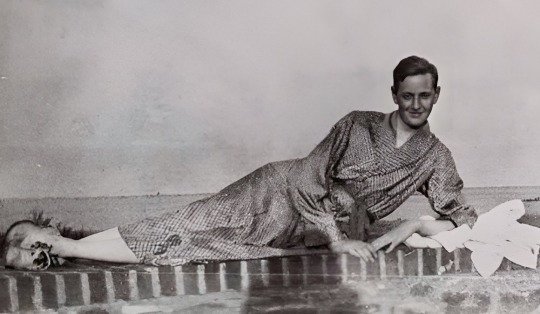
In the 1920s Lygon would throw “racy” parties at Walmer, a castle he had been given. Lady Christabel Aberconway wrote in her diary of open party she attended:
“We arrived and were shown into a garden… There was the actor Ernest Thesiger, a friend of mine, nude to the waist and covered with pearls.”
Thesinger is best known for his campy performance as Dr Pretorius in “The Bride of Frankenstein” (1935).
Apparently Lygon’s sexual activity was an open secret within Britain’s upper crust. He had sexual affairs with servants, common men and other socialites (often at Madresfield Court, the Lygon family home; and at Walmer Castle when he resided).
Lygon toured Australia in 1930 with a young valet, who lived with him. The Australian Star newspaper reported:
“The most striking feature of the vice-regal ménage is the youthfulness of its members … Rosy cheeked footmen. (Each wearing) many lanyards… festoons from their broad shoulders. Lord Beauchamp deserves great credit for his taste in footmen.”
This came to the attention of Hugh Grosvenor (Duke of Westminster). He was Lygon’s brother-in-law and political rival. He hired detectives to get evidence about Lygon’s trysts.
Grosvenor was a Tory, an opposing party, and he wanted to ruin both Lygon and the Liberals. Grosvenor provided his evidence to King George V that Lygon was a homosexual. The King reportedly said,
“I thought men like that shot themselves.”
In 1931, Lygon was given an ultimatum - he must divorce his wife, resign from all offices and leave the country. Otherwise he would face public humiliation, arrest and potentially time in prison. Lygon left England immediately, first heading to Germany where he contemplated suicide. But he was talked out of it by his eldest son.
Grosvenor also showed the evidence to Lettice, Lygon wife, and Grosvenor sister. When told her husband was a bugger, Lettice misunderstood and thought he was being accused of being a bugler.
The divorce petition described Lygon as:
“A man of perverted sexual practices, [who] has committed acts of gross indecency with male servants and other male persons and has been guilty of sodomy … throughout the married life …”
Ironically Lygon’s children sided with the father and visited him often when he was out of the country. They shunned they’d mother.
Afterwards Lygon traveled, making his way to Paris, Venice, Sydney and San Francisco. But he returned to England after King George V died in 1936. His successor King George IV lifted the arrest warrant.
Lygon returned to Madresfield, his family estate in 1937. Unfortunately he was diagnosed with cancer and died in 1938.
Before his death, Grosvenor wrote Lygon saying,
"Dear Bugger-in-law, you got what you deserved. Yours, Westminster."
(Grosvenor, by the way, was a Nazi sympathizer and hated Jews, he was known for His anti-Semitic rants.)
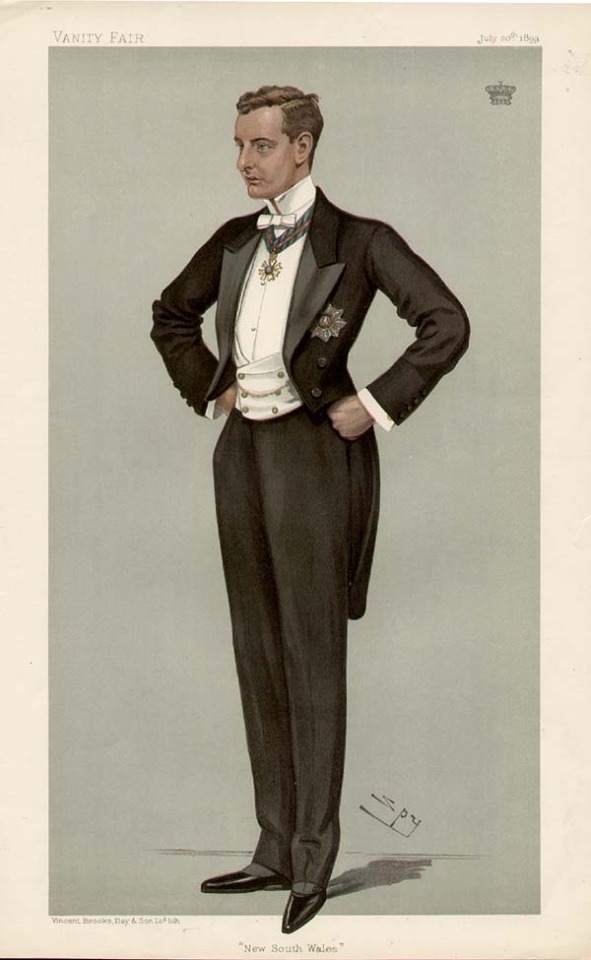
#gay icons#william lygon#Gross Indecency act#Oscar Wilde#Alan Turing#Ernest Thesiger#vanity fair#Evelyn Waugh#brideshead revisited#Sebastian Flyte
10 notes
·
View notes
Text
Return to the festive light trail


If there’s one thing that’s hard to escape from at Christmas it’s the lights. From shop windows and high streets to our own Christmas trees, we simply can’t ignore the multitude of colours glaring into the atmosphere. It’s also the reason why Christmas is one of my favourite times of year for photography; depending on what you’re capturing, most camera techniques work to translate a set of lights into sensational photographs including close ups, out of focus blurs and even birds eye views. For the past couple of years, one particular festive attraction has been a gold mine for light photography and I set out once again to snap into the holiday spirit - see what I did there?
Walmer Castle, residing on the south east coast of England, is home to some of the most enchanting gardens, woodlands and wildlife. For the past few years, these have been further enhanced by the festive light trail that lights up every inch of castle grounds in every shade of luscious light. Unfortunately, the set route meant I couldn’t get many close up shots, but that didn’t stop me experimenting with composition - where objects are positioned in the photo. The woodland trees were an obvious choice due to the entwining branches of colour and plenty of room (quite literally) for all the camera angles I wanted. As much as I was mainly on the trail to enjoy the festivities, it was interesting to see what was new this year or what I wished had returned from the last. Despite the restrictions on some castle grounds, having a plan B still resulted in some unique photos along with memories that will last forever.
#environment#outdoors#england#photojournalism#nature#naturephotography#united kingdom#christmas tree#christmas#nightimephotography#night#lightphotography#lights#castle
2 notes
·
View notes
Text
Walmer Castle in Kent is home to the private lodgings of The Lord Warden of Cinque Ports. Until now, the apartment has been kept behind closed doors, but it is now open to the public. Take a look inside…
http://dlvr.it/T4p5PL
0 notes
Photo

The big man on the #mastering duties. Thank you 🙏 @thisisadamwhite for being a wealth of knowledge and supporting my journey. People like you are few and far between (at Walmer Castle) https://www.instagram.com/p/CkScSB2NLZK/?igshid=NGJjMDIxMWI=
0 notes
Text
Days out in Kent // Walmer Castle
Days out in Kent // Walmer Castle
We have had English Heritage passes before, but until recently we have never visited Walmer Castle. Situated along the Deal Coast, Walmer Castle is a smaller castle with beautiful grounds and a fantastic place to visit with young children.
There is parking on site, although it was closed the day of our visit, and there is a car park opposite the entrance and free parking on nearby streets. You…
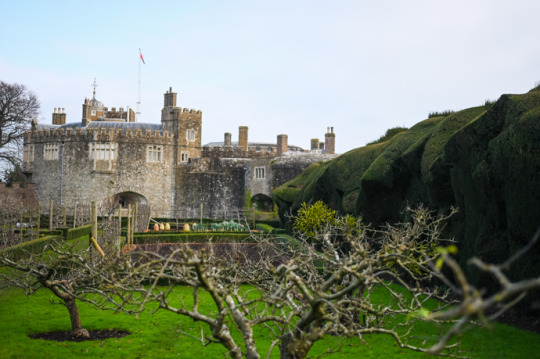
View On WordPress
0 notes
Text
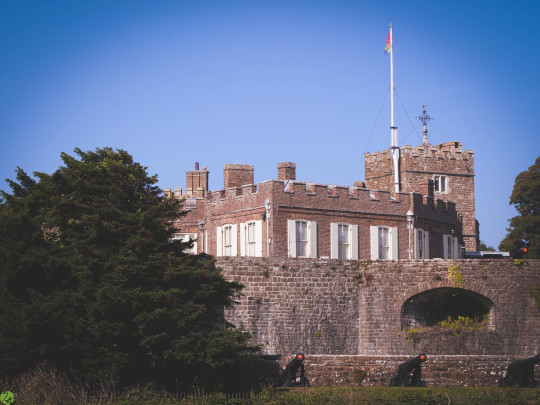
Walmer Castle, Walmer, Kent, England, September 2023.
#photography#nature photography#nature#trees#castle#kent#england#walmer#walmer castle#lensblr#photographers on tumblr#buildings#architecture#architecture photography#original photography
5 notes
·
View notes
Photo

White chocolate magnum. Which do you prefer. Join me. (at Walmer Castle) https://www.instagram.com/p/Cd3ePcKj74c/?igshid=NGJjMDIxMWI=
0 notes
Photo

Walmer Castle
#myphotography#walmer castle#castle#gardens#summer#Architecture#henry viii#england#photography#castles
185 notes
·
View notes
Text
Christmas special
There's one aspect of Christmas that's guaranteed every year, which is lights. Whether it's the high street, our tree at home or in shop windows, there's no escaping them. Even city and town landmarks get glitzed up to further kick start the holiday season. That is exactly what I set out to see for myself this year.
Walmer Castle, located on the English South East coast, boasts centuries of history, lucious gardens and woodlands. Just when I thought they couldn't be any more beautiful, flocks of visitors stopped by for a spot of sightseeing with a seasonal twist. Come nightfall, every corner, grassy pathway and castle wall became illuminated with a constant array of lights, from strings of soft white shades to beaming colours of the rainbow and more. For me to use the word 'festive' would be an understatement.
Nighttime photography poses fantastic opportunities that never occur during day time, especially at Christmas. However, once you find that moment and harness the technique of capturing it, the results are magical.

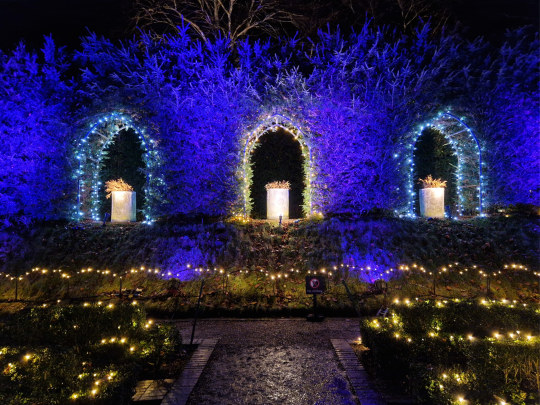
#castle#lights#lightphotography#nightimephotography#night#fields#water#winter#winter photography#england#united kingdom#nature#outdoors#environment#photojournalism#christmas
0 notes
